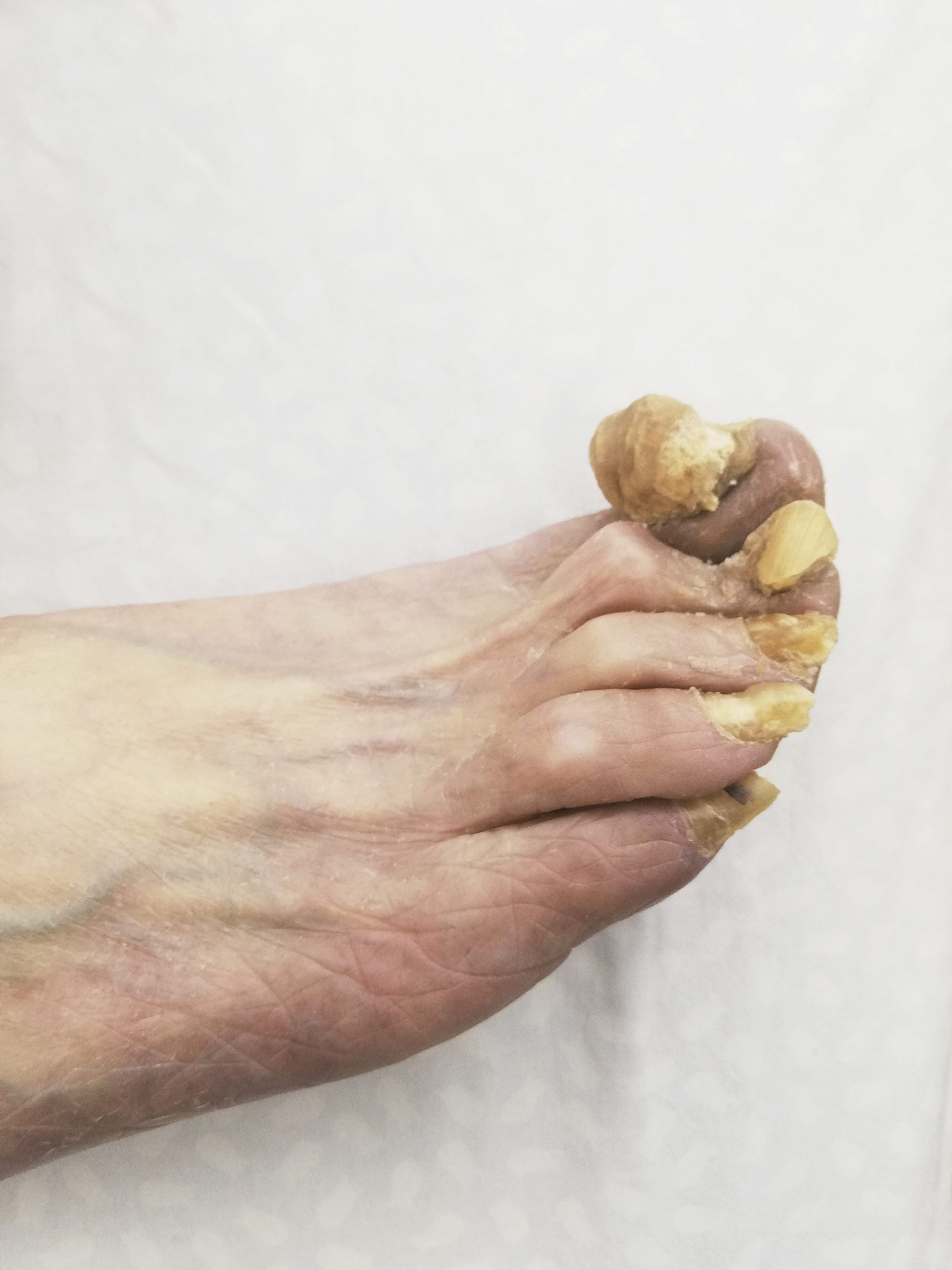
Onychomycosis, commonly known as a fungal nail infection, is usually treated using various approaches, including topical medications, oral antifungal medications, and in some cases, surgical intervention. The treatment method depends on the severity of the infection, the type of fungus involved, and the individual’s overall health.
- Topical Medications: Mild to moderate cases of onychomycosis can be treated with antifungal nail creams, gels, or lacquers that are applied directly to the infected nails. These medications typically contain antifungal agents such as ciclopirox or amorolfine. Topical treatments are usually used for several months until the infected nail grows out and is replaced by healthy nail.
- Oral Antifungal Medications: In cases of moderate to severe onychomycosis or when topical treatments are not effective, oral antifungal medications may be prescribed. The most commonly used oral medications for onychomycosis are terbinafine and itraconazole. These medications are taken for a specified period, often several weeks or months, and help in the growth of healthy, fungus-free nails. Regular monitoring of liver function may be required during oral antifungal treatment.
- Combination Therapy: In some instances, a combination of topical and oral antifungal medications may be prescribed to increase treatment efficacy. This approach is often used when the infection is extensive or involves multiple nails.
- Surgical Treatment: If the fungal infection is severe, causes significant pain, or fails to respond to other treatment methods, surgical intervention may be considered. Surgical options include partial or complete removal of the infected nail (nail avulsion) or permanent nail removal (nail matrixectomy). Surgical procedures are typically done by a dermatologist or a podiatrist.
It’s important to note that treating onychomycosis can take a long time, as the infected nails grow slowly and it can take several months for new, healthy nails to replace the infected ones. Additionally, it’s crucial to follow the prescribed treatment plan consistently and maintain good foot hygiene to prevent reinfection. Consulting with a healthcare professional is recommended to determine the most suitable treatment approach for individual cases.
See More on Video

Overcoming Onychomycosis™ By Scott Davis The program can help you to treat your nail fungus naturally. Once you follow this program, you do not need to spend on expensive treatments to prevent a recurrence.